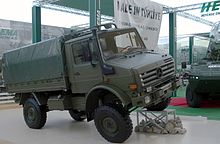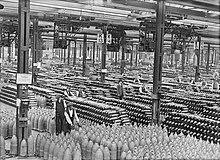
The economy of Israel is a highly developed free-market economy. The prosperity of Israel's advanced economy allows the country to have a sophisticated welfare state, a powerful modern military said to possess a nuclear-weapons capability with a full nuclear triad, modern infrastructure rivaling many Western countries, and a high-technology sector competitively on par with Silicon Valley. It has the second-largest number of startup companies in the world after the United States, and the third-largest number of NASDAQ-listed companies after the U.S. and China. American companies, such as Intel, Microsoft, and Apple, built their first overseas research and development facilities in Israel. More than 400 high-tech multi-national corporations, such as IBM, Google, Hewlett-Packard, Cisco Systems, Facebook and Motorola have opened R&D centers throughout the country.

An export in international trade is a good produced in one country that is sold into another country or a service provided in one country for a national or resident of another country. The seller of such goods or the service provider is an exporter; the foreign buyers is an importer. Services that figure in international trade include financial, accounting and other professional services, tourism, education as well as intellectual property rights.
The Stockholm International Peace Research Institute, SIPRI, Arms Transfers Database contains information on all international transfers of major weapons to states, international organizations and armed non-state groups since 1950. It is the only publicly available resource providing consistent data on arms transfers for this length of time. The database can be used to track transfers of major weapons and to answer such questions as:
The small arms trade is the markets of both authorized and illicit small arms and light weapons (SALW), as well as their parts, accessories, and ammunition.

Stockholm International Peace Research Institute (SIPRI) is an international institute based in Stockholm. It was founded in 1966 and provides data, analysis and recommendations for armed conflict, military expenditure and arms trade as well as disarmament and arms control. The research is based on open sources and is directed to decision-makers, researchers, media and the interested public.

The military budget of China is the portion of the overall budget of China that is allocated for the funding of the military of China. This military budget finances employee salaries and training costs, the maintenance of equipment and facilities, support of new or ongoing operations, and development and procurement of new weapons, equipment, and vehicles. Every March, as part of its annual state budget, China releases a single overall figure for national military expenditures.

JSC Rosoboronexport is the sole state intermediary agency for Russia's exports/imports of defense-related and dual use products, technologies and services. The Rosoboronexport Federal State Unitary Enterprise (FSUE) was set up in 2000 by a Decree of the President of Russia and is charged with implementation of the policy of the State in the area of military-technical cooperation between Russia and foreign countries. In 2007, the enterprise was re-registered as Rosoboronexport Open joint-stock company (OJSC). In 2011, Rostekhnologii non-profit state corporation acquired 100% of Rosoboronexport OJSC.
Poly Technologies, sometimes abbreviated as PolyTech, a subsidiary of China Poly Group Corporation, is a trade company with headquarters in Beijing, China. The company deals with missiles and other military products. The company was founded by the Chinese People's Liberation Army in order to provide competition to China North Industries Corporation (Norinco). The company is one of China's largest arms exporters and has been sanctioned by the United States. Poly Technologies has supplied gunpowder to Russian ammunition manufacturers following the Russian invasion of Ukraine.

The Defense Industries Organization (DIO) is a conglomerate of companies run by the Islamic Republic of Iran whose function is to provide the Armed Forces with the necessary manufacturing capacity and technical abilities. In recent years, the DIO has attempted to become export-oriented, allowing Iran to become an exporter of weapons.
The Defence Industry of Pakistan, established in September 1951, mainly falls under the purview of the Ministry of Defence Production (MoDP). It aims to foster collaboration and oversee the diverse range of military production facilities that have emerged since Pakistan's independence. The MoDP comprises specialized organizations, each dedicated to various aspects of the defence industry, including research and development, production, and administration.
Canadian Arms Sales are governed by the country's Export and Imports Permits Act. Sales with the United States are also specifically regulated by the 1959 Defence Production Sharing Arrangement.
The arms industry of Russia, also known as the defense industry of Russia is a strategically important sector and a large employer in the Russian Federation. As of 2024, it employs approximately 3.5 million people nationwide and accounts for 20% of all manufacturing jobs in Russia.

Russia–Syria relations are the bilateral relations between Russia and Syria. Russia has an embassy in Damascus and Syria has an embassy in Moscow. Russia enjoys a historically strong, stable, and friendly relationship with Syria, as it did until the Arab Spring with most of the Arab countries. Russia's only Mediterranean naval base for its Black Sea Fleet is located in the Syrian port of Tartus.

Algeria's economy continued to recover in the first half of 2022, led by a return of oil production to pre-pandemic levels and a continued recovery of the service sector along with a more vigorous agricultural activity. The recovery should continue into 2023, supported by the nonhydrocarbon sector and public expenditure growth, according to the latest edition of the World Bank's Algeria Economic Update.

The Arms Trade Treaty (ATT) is a multilateral treaty that regulates the international trade in conventional weapons.
Offsets are compensatory trade agreements, reciprocal trade agreements, between an exporting foreign company, or possibly a government acting as intermediary, and an importing entity. Offset agreements often involve trade in military goods and services and are alternatively called: industrial compensations, industrial cooperation, offsets, industrial and regional benefits, balances, juste retour or equilibrium, to define mechanisms more complex than counter-trade. Counter-trade can also be considered one of the many forms of defense offset, to compensate a purchasing country. The incentive for the exporter results from the conditioning of the core transaction to the acceptance of the offset obligation.
The defense industry of Israel is a strategically important sector and a large employer, as well as a major supplier of the Israel Defense Forces. The country is one of the world's major exporters of military equipment, accounting for 10% of the world total in 2007. Three Israeli companies were listed on the 2022 Stockholm International Peace Research Institute index of the world's top 100 arms-producing and military service companies: Elbit Systems, Israel Aerospace Industries and RAFAEL. It is also a major player in the global arms market with a 2.3% share of the global exports of major arms as of 2023. Total arms transfer agreements topped $12.9 billion between 2004 and 2011. There are over 150 active defense companies based in the country with combined revenues of more than $3.5 billion annually. Israeli defense equipment exports reached $7 billion in 2012, making it a 20 percent increase from the amount of defense-related exports in 2011. With the war in Ukraine, arms exports reached $12.5 billion in 2022. Much of the exports are sold to the United States and Europe. Other major regions that purchase Israeli defense equipment include Southeast Asia and Latin America. India is also major country for Israeli arms exports and has remained Israel's largest arms market in the world.

The defence industry sector of India is a strategically important sector in India. India has one of the world's largest military forces with a strength of over 1.44 million active personnel. It has the world's largest volunteer military of over 5.1 million personnel. The total budget sanctioned for the Indian military for the financial year 2021 is ₹4.78 lakh crore. It has the third largest annual defence budget behind USA and China. It is the second largest defence importer behind Saudi Arabia making up 9.2% of global arms import. India has a domestic defence industry of which 60% is government owned. The public sector includes NTRO, CSIR, PRL, DRDO and its 50 labs, 4 defence shipyards, 12 defence PSUs. India has a new defence procurement, acquisition and manufacturing policy to reduce imports and enhance domestic manufacturing.

The defense industry of Ukraine is a strategically important sector and a large employer in Ukraine. After working for several decades mostly for the arms export markets, in 2014 it has moved significantly into increased Ukrainian military procurement since the start of the war in Donbas.
The defense industry of South Korea is the main supplier of armaments to the Republic of Korea's Armed Forces. Originally reliant on the United States to supply weapons to its armed forces, South Korea started to manufacture its own weapons through the country's modernization and military reforms. Today, South Korea enjoys a robust defense industry and is the world's 8th largest weapons exporter.



















